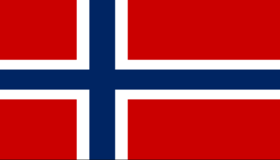Religion in Emerstari
This article is incomplete because it is pending further input from participants, or it is a work-in-progress by one author. Please comment on this article's talk page to share your input, comments and questions. Note: To contribute to this article, you may need to seek help from the author(s) of this page. |
| This article is part of on the |
| Culture of Emerstari |
|---|
 |
| Society |
| Traditions and Art |
| National symbolry |
| Other |
| Affiliation | % of Emerstarian Population | |
|---|---|---|
| Christianity | 83.4 | |
| Protestant | 79.3 | |
| Lutheran | 71.3 | |
| Prysbeterian | 6.4 | |
| Other Protestant | 6.5 | |
| Catholic | 3.1 | |
| Eastern Orthodox | 0.5 | |
| Other Christian | 0.5 | |
| Judaism | 0.9 | |
| Hinduism | 0.5 | |
| Buddhism | 0.4 | |
| Islam | 0.1 | |
| Other faiths | 1.3 | |
| Irreligion | 12.8 | |
| Nothing in particular | 6.2 | |
| Agnostic | 3.9 | |
| Atheist | .2 | |
| Don't know or didn't state | 0.6 | |
Over three quarters of Emerstarians identify as Christians, making it by far the most practiced religion in Emerstari; of this 83.4%, 71.3% of Emerstarians are members of the Church of Emerstari, — the state religion. Christianity was first brought to Emerstari in the first century, and from then to the early 20th century was virtually the only religion practiced within Emerstari. Nonreligious people comprise the second largest group (12.7%), and Judaism is the third largest group (1.9%) despite historical persacution.
Prior to the introduction of Christianity, there were two major religions practiced in Emerstari: Emerstrú and the Scanian religion. Initially, they became part of the Catholic Church, but then from the 1440s, Emerstari switched to Lutheranism as part of the Reformation in Eurevia which converted most of northern Scania. The Church of Emerstari was then formed and still remains as the state religion.